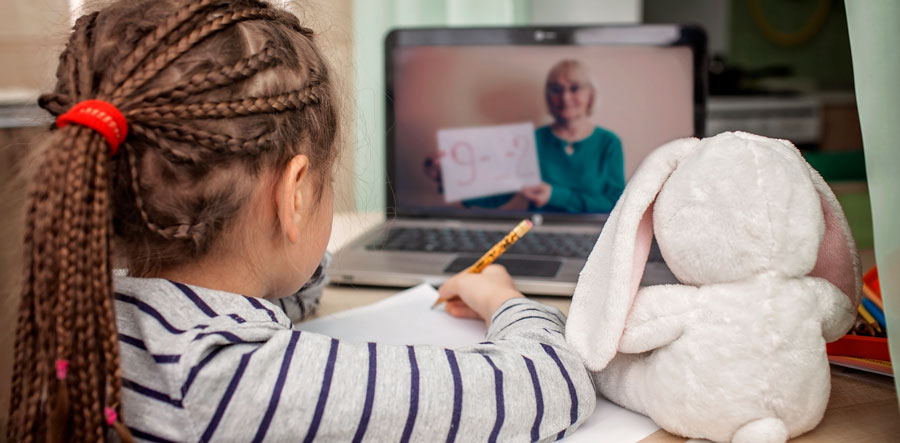Digital Accessibility: How Schools and Teachers Can Support Students with Disabilities in Remote Learning

The rapid shift to remote teaching and learning necessitated by the global coronavirus pandemic exposed areas of significant need in schools and districts. Specifically, it has underscored previously unknown or poorly understood gaps in equity, access, tools, and infrastructure in schools and districts nationwide. Educators had to accelerate technology implementation plans and professional development to move their curriculum online, while simultaneously building educator and family capacity to use technology. Of equal importance was the need to ensure that students with disabilities and English learners had the supports necessary to work remotely from home.
Keeping an eye on issues of equity in remote learning environments can seem overwhelming, particularly when moving teaching and learning from the classroom to an online platform. During this time of transition, ensuring equity for students with disabilities involves ensuring that all digital materials and platforms are accessible and work with the assistive technology tools available to students.
The good news is that there are actionable steps and resources for both teachers and education leaders to improve the accessibility of remote learning activities. Taking the time to address digital accessibility has an overarching benefit: Universally designed and accessible learning materials can benefit all learners. Taking advantage of the resources listed below and implementing changes that improve accessibility will help you create more robust, engaging, and user-friendly digital learning experiences overall.
Universal Design for Learning (UDL) is drawn from the concept of Universal Design (UD). This means that all products and the environment where they are accessed should be designed to be usable by everyone, regardless of ability, age, or status. It includes an acknowledgement that accessible and universal design benefits everyone, while also ensuring users with disabilities can access the educational materials.
Here are two examples of how this works in practice. Ramps and curb cuts ensure access to public spaces by people with physical disabilities but are also used and appreciated by people pushing strollers or wheeling heavy luggage. Similarly, captioned videos help ensure access for deaf users or users with hearing impairments but provide numerous benefits for all.
Learn more about the benefits of universal design and digital accessibility in this brief: ESSA and Digital Learning: Closing the Digital Accessibility Gap.
What is Accessible Content?
Accessible digital content means that:
- All users can navigate, perceive, understand, and interact with content; and
- Content considers the needs of individuals with physical, visual, speech, auditory, neurological and cognitive disabilities.
When designing or evaluating content to ensure access by the broadest range of students, it is helpful to refer to the four principles of accessibility, also referred to as POUR.
- Perceivable: Users can see and hear the content.
- Operable: Users can interact with the content using a variety of tools.
- Understandable: Users can understand and navigate the content.
- Robust: The content works with current and future technologies, including a user’s assistive technology.
The National Center on Accessible Educational Materials has additional resources to learn more about POUR and how to design for accessibility.
How to Improve Accessibility
Here are several additional resources with practical actions for education leaders and teachers to explore as they seek to improve accessibility.
- 10 simple fixes for teachers to make classroom resources more accessible: a blog post from PowerUp What Works
- How to help students accessibility features in Microsoft Office 365: PD on the Go Resource from PowerUp What Works
- Best practices and tips for teachers instructing remotely: a slide-deck presentation by University of Massachusetts Professor Torrey Trust
- What education leaders should know about digital accessibility: a toolkit from PowerUp What Works
- How to assess accessibility features in digital learning materials: a short video from the National Center on Accessible Educational Materials
- How Universal Design for Learning (UDL) can help improve accessibility: overview resource from PowerUp What Works
This In the Field piece is part of a content series developed for the Innovation Hub at AIR. The Innovation Hub is a central platform that connects AIR experts, communities of practice (CoPs), and resources to support educators and members of the general public as they navigate instructional challenges related to the COVID-19 global pandemic.
